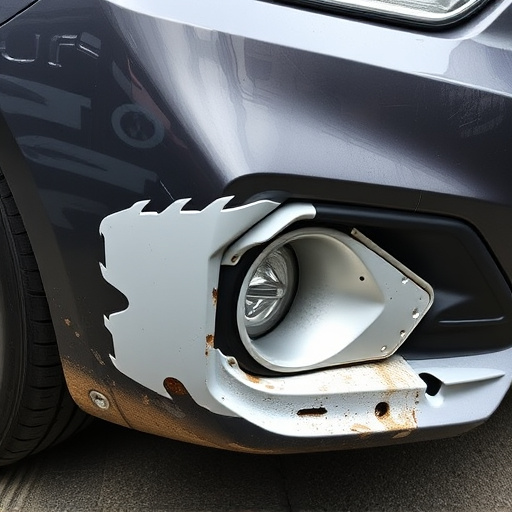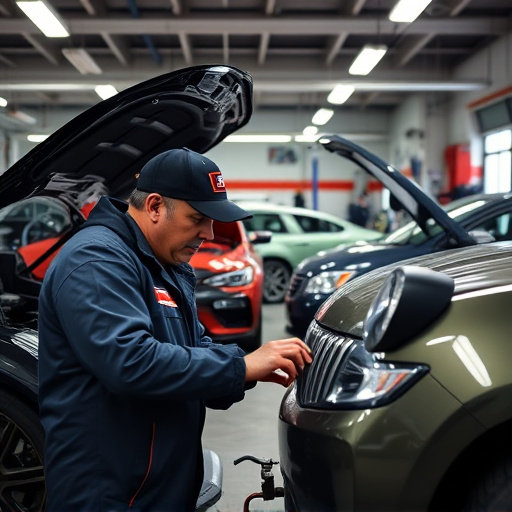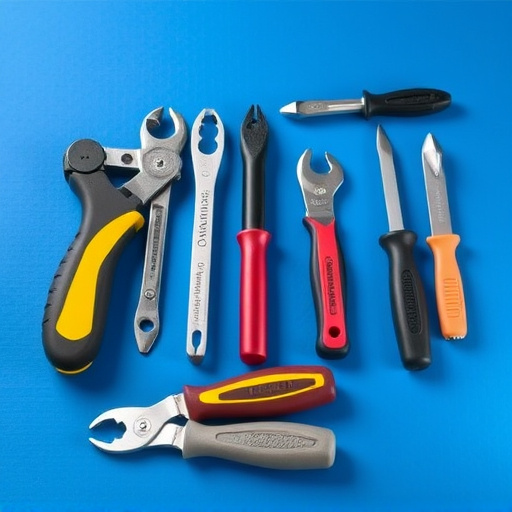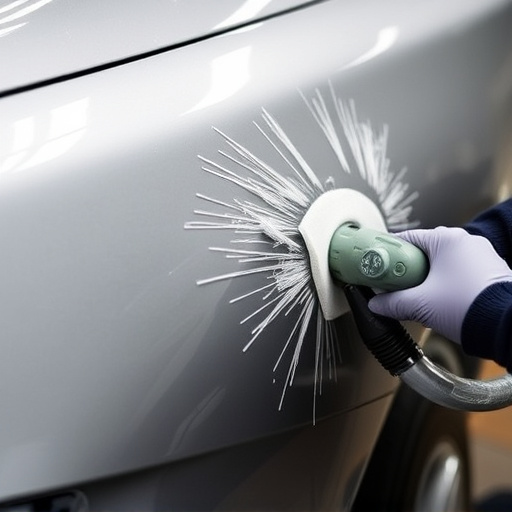Winter Tires Reduce Snow-Related Crash Repairs Frequency

Winter tires are a critical preventive measure for reducing snow-related crash repairs by enhancing…….
Welcome to an in-depth exploration of a critical aspect of road safety that often goes unnoticed until it becomes a pressing issue—snow-related crash repair. As winter landscapes transform, so do the demands on road maintenance and transportation infrastructure. This article aims to dissect the complexities of snow-related crashes, provide valuable insights into repair strategies, and highlight their global impact. By delving into various facets, from technological innovations to policy implementations, we will uncover the intricacies of this vital field, ensuring better preparedness for safer winters ahead.
Definition:
Snow-related crash repair encompasses the set of practices and procedures designed to mitigate risks associated with winter driving conditions, primarily ice, snow, and reduced visibility. It involves responding to vehicle accidents, stranded vehicles, and road hazards caused by adverse weather, ensuring the safety and efficiency of transportation networks during snowy seasons.
Key Components:
Historical Context:
The concept of snow-related crash repair has evolved over centuries as human settlements adapted to harsher winters. Early strategies focused on basic clearing methods using shovels and animal-drawn sleds. However, the advent of motor vehicles and increasing urbanization led to more complex challenges. Modern snow removal equipment and techniques emerged in the 20th century, driven by growing transportation demands and safety considerations.
Significance:
In regions with significant snowfall, effective snow-related crash repair is not just a convenience but a critical life-safety measure. It plays a pivotal role in:
International Influence:
Snow-related crash repair is a global concern, with each region adopting strategies tailored to its unique climate and infrastructure challenges. North American cities like New York and Toronto have extensive snow removal programs, while European countries like Sweden and Finland are renowned for their efficient road clearing techniques due to harsher winters. Asian metropolises, such as Tokyo and Beijing, face immense logistical challenges during heavy snowfall events.
Regional Variations:
| Region | Challenges | Popular Strategies |
|---|---|---|
| North America | Rapid snow accumulation, dense urban populations | Snowplowing, salt/sand application, real-time traffic monitoring |
| Europe | Varied winter conditions, mountainous terrain | Multi-functional vehicles, ice-melting chemicals, automated clearing systems |
| Asia | Dense urban centers, limited road space | Innovative storage solutions, quick-response teams, public transport prioritization |
| Scandinavia | Extreme cold, frequent blizzards | Advanced snow blowing equipment, smart traffic management systems, community preparedness |
Trends Shaping the Future:
Market Dynamics:
The global snow removal equipment market is a dynamic sector, driven by increasing demand from governments and municipalities worldwide. The market includes a wide range of vehicles, tools, and services, with key players offering specialized solutions for snow-prone regions. According to recent reports, the market size was valued at USD 15.6 billion in 2020 and is projected to grow at a CAGR of 4.8% from 2021 to 2028.
Investment Patterns:
Governments allocate significant budgets annually for snow-related infrastructure and maintenance, reflecting the critical nature of these services. Private investments in snow removal technology and innovation are also on the rise, with venture capital firms backing startups offering advanced solutions.
Economic Impact:
Snow-related crash repair has a substantial economic impact:
Innovations Transforming the Field:
Future Potential:
The future holds immense possibilities for technological advancements in snow-related crash repair:
Key Policies Governing Snow Removal:
Legislative Frameworks:
International Cooperation:
Border regions and countries facing similar winter challenges often collaborate on best practices, sharing knowledge and resources to enhance regional preparedness.
Main Issues Faced:
Proposed Solutions:
1. Toronto, Canada – Smart City Snow Management:
Toronto implemented a comprehensive smart city initiative, integrating IoT sensors and real-time data analytics for efficient snow management. The system provides accurate weather forecasts, traffic flow information, and road condition updates. This enabled the city to deploy resources more effectively, reduce plowing times, and minimize traffic disruptions during severe snowstorms.
2. Stockholm, Sweden – Innovative Snow Clearing Techniques:
Stockholm’s transportation authority employs advanced snow blowing equipment with GPS and sensor technology. They also utilize a unique “snow-on-demand” system, where warm water is sprayed on roads to melt snow at targeted locations, preventing accumulation. This method has significantly reduced the need for salt/sand applications, minimizing environmental impact.
3. Tokyo, Japan – Multi-Pronged Approach:
Tokyo’s Metropolitan Government employs a multi-faceted strategy, including efficient road clearance, real-time traffic monitoring, and public education campaigns. They also invest in innovative storage solutions, such as underground parking facilities, to alleviate congestion during heavy snowfall. These measures have contributed to Tokyo’s reputation as one of the world’s best-prepared cities for winter storms.
Emerging Trends:
Growth Areas:
Strategic Considerations:
Snow-related crash repair is a dynamic field that demands continuous adaptation to evolving winter conditions and technological advancements. As we navigate the complexities of climate change, urban growth, and increasing transportation demands, effective strategies will be crucial in ensuring safe roads, minimizing economic disruptions, and protecting lives during snowy seasons. By embracing innovation, fostering community resilience, and implementing data-driven decisions, we can enhance our preparedness and create a safer, more sustainable future for winter travel.
Q: How do I know if my area is adequately prepared for severe winter storms?
A: Check local government websites or contact your municipal transportation department for information on snow removal plans, emergency response protocols, and community preparedness initiatives.
Q: What are some eco-friendly alternatives to salt/sand de-icing?
A: Warm mix asphalt (WMA), calcium chloride, and magnesium chloride are environmentally friendly alternatives that reduce emissions and minimize environmental impact.
Q: Can autonomous vehicles fully replace human drivers in snow removal operations?
A: While autonomous vehicles show promise, they may not fully replace human drivers due to complex winter conditions and dynamic road scenarios. However, they can assist in routine tasks and enhance overall efficiency.
Q: How can I contribute to better snow-related crash repair efforts?
A: Stay informed about local plans and initiatives, participate in community watch programs, drive cautiously during winter, and support research and development of innovative solutions.
Q: What role does technology play in predicting winter weather patterns?
A: Advanced weather forecasting models combined with IoT sensors provide accurate real-time data, enabling better preparation and decision-making for snow removal operations.

Winter tires are a critical preventive measure for reducing snow-related crash repairs by enhancing…….

After a snowstorm, inspect your car for visible and hidden damage from crashes. Document and protect…….

Thorough damage assessment is crucial for effective snow-related crash repair. Inspect undercarriage…….

After a snow crash, thorough inspection is key to effective snow-related crash repair. Look for visi…….

Snowy conditions pose significant risks for drivers due to reduced visibility, icy roads, and snow a…….

Snow and ice significantly alter vehicle dynamics in collisions, increasing spinout risk and causing…….

Snow and ice significantly impact vehicle dynamics in collisions, causing misalignment of parts and…….

Snow-related accidents peak in winter, demanding specialized vehicle repairs. Reputable shops invest…….

Adhering to OEM guidelines is crucial for snow-related crash repair, ensuring vehicle safety and per…….

Snow-related crashes pose unique challenges with slippery roads and reduced visibility, potentially…….